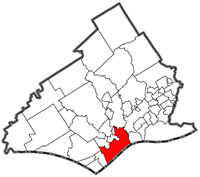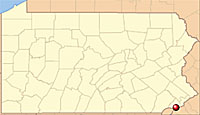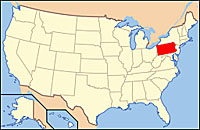Chester, the oldest city in Pennsylvania, was founded in 1644 by Swedish settlers and was named after the city in England by William Penn upon his landing in 1683. During the 1850’s, the Industrial Revolution gave Chester its status as an industrial center, bringing numerous high paying jobs for unskilled workers at steel mills, shipyards, aircraft engine factories, textile mills, and other locations.
This growth in industry motivated a simultaneous growth in population, from 1,667 in 1850, to a population of 6,400 in 1860, and then to an even greater population of 14,000 in Chester and its surrounding suburbs in 1870. Growth was further stimulated by both World War I and World War II, with populations of 58,000 in 1920 and 66,000 in 1950.
Many of Chester’s current characteristics are rooted in this history, including both positive aspects and the problems currently challenging the city. In the 1960’s, Chester began to lose its mainstay shipyard and automobile manufacturing jobs. The change in jobs was again accompanied by a responsive change in population, with a decrease from 66,000 in 1950 to a population of under 37,000 in 2000.
As all but two major companies closed or moved south, employment declined and poverty ensued. In response, many who were able (mostly white members of the community) moved to the suburbs as African Americans moved in from the south, altering the demographics of the city.
Today, the population is even smaller at 33,972, with 74.7% of the population being black, 17.2%white, and 9% Latino or Hispanic, according to 2010 data.
Now, 10.5% of persons age 25 or older, less than half of the percentage for the State of Pennsylvania, have a bachelor’s degree or higher, 40.1% have ownership of their homes, and 36.1% of people of all ages are in poverty, according to 2005-2009 data.
Chester is home to several developments including the PPL Park soccer stadium and Harrah’s Casino along the waterfront, and a prison. It is also used as the backdrop for conversations involving issues of environmental and food justice.


